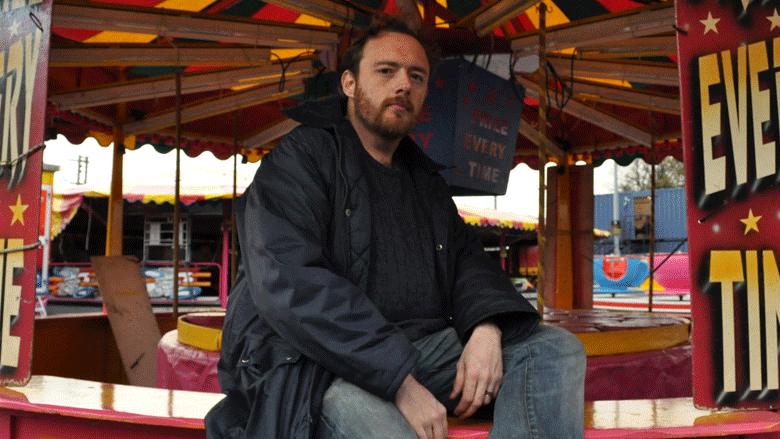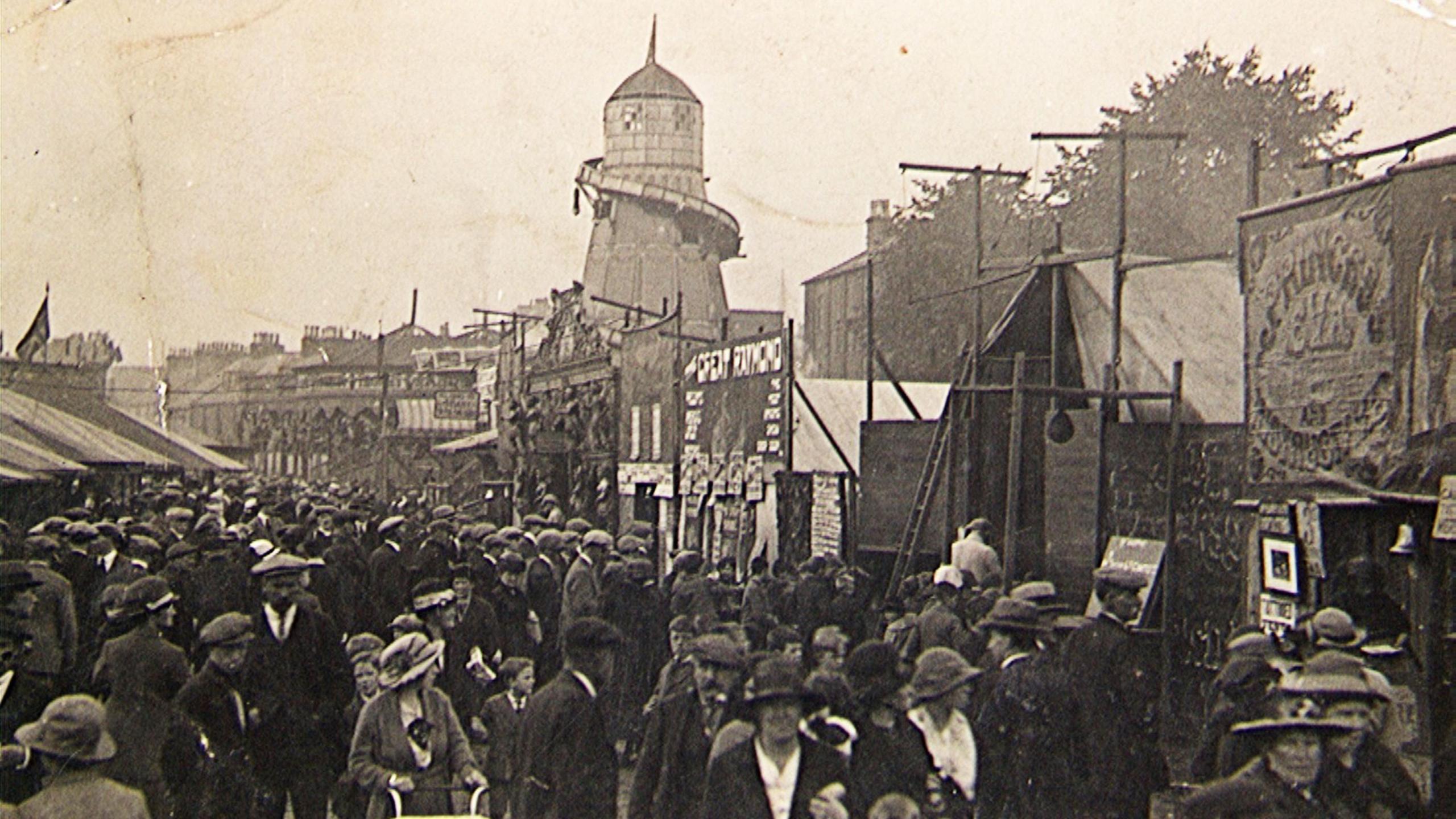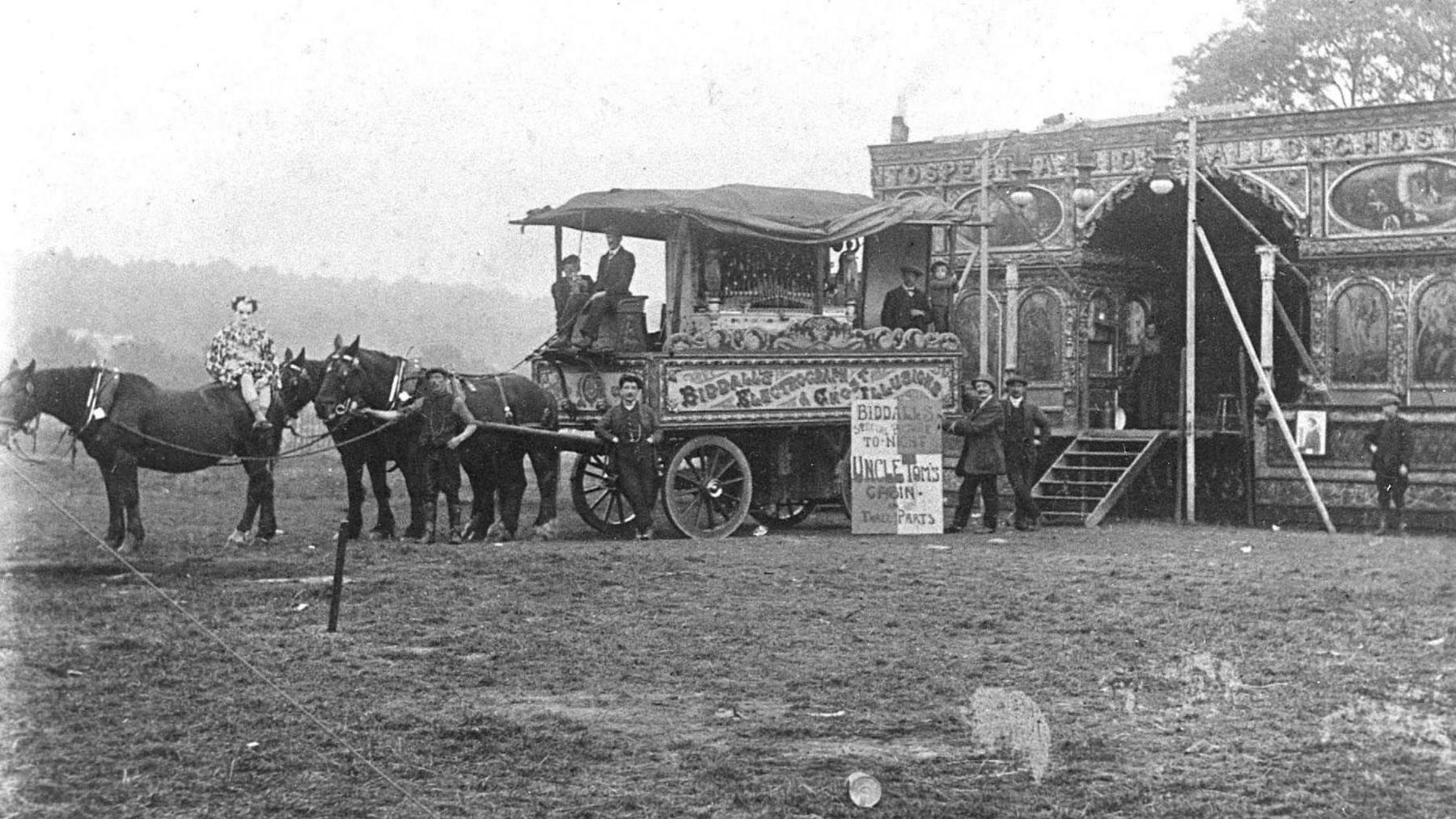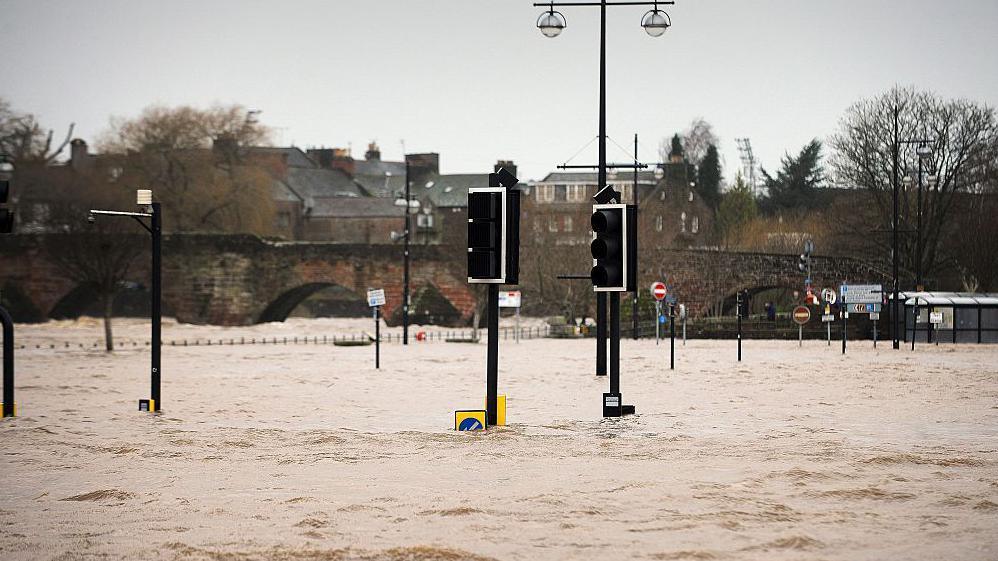Historic fair fears for future over flood scheme

Dumfries Fair has a special place in Dr Mitch Miller's heart
- Published
A historic fair in the south of Scotland has been put at the top of a "red list" of endangered events due to fears it will be moved from its traditional location by a flood prevention project.
Dumfries hosts two fairs - in March and September each year - in the Whitesands area and has done so for centuries.
However, charity Fair Scotland said it - along with others - was under threat while many events had already been lost.
Dumfries and Galloway Council said "positive discussions" were ongoing between the fair and the Whitesands project team and would continue throughout its development.

The fair visits Dumfries twice a year in March and September
Fair Scotland has launched a national campaign to save fairs and started collating the list of lost and endangered events.
It said that fairs - many of which date back centuries - provide a livelihood for an 8,000-strong community of show people.
Fair Scotland co-chairs Dr TS Beall and Dr Mitch Miller said they hoped that by highlighting the fairs which had been lost and the ones under threat they could save any more from disappearing.
In Dumfries, they said the uncertainty over any potential move away from the Whitesands to make way for flood defences put the event in danger.
The council hopes work can start on that multi-million pound project in 2026 although there are still a number of steps to be completed in order to meet a Scottish government funding deadline.
It also faces significant local opposition due to concerns over loss of parking, visual impact and costs.

The fair has been a regular visitor to Dumfries for centuries
Dr Beall said there was a risk the Dumfries fairs might simply "wither and die" if they could no longer be accommodated on the Whitesands.
"There is a very current situation regarding the flood protection plans and it is, simply put, that the plans as they are currently in place may not allow the fairs," she said.
"These fairs may not be able to continue to be staged on the Whitesands, where they have literally been operating every single year for probably 700 to 800 years, outwith Covid."
She said conversations were ongoing with the design team to see if things could be changed and she said they were grateful for the chance to talk to them.

Dr Beall said people would miss the fair if it was lost to Dumfries
"We really want to highlight to people in Dumfries and Galloway and for everyone living in Dumfries how fragile the fairs are," she added.
"They seem so robust and lively and amazing - and they are all those things - but they're also this kind of incredibly fragile ecosystem of individual family firms that travel from all across Scotland and north and central England to put rides and stalls together.
"I think if you disrupt that ecosystem, for example, by moving the fair to another location or by constricting the fair or shunting the fair into a wee parking lot nearby what that will do is allow the fair to wither and die.
"It may not be immediate, but if you move it, if you constrain it, if you take it off of its historic grounds, it will wither and die - that's what our research suggests."
She said she hoped a way could be found to allow the fairs to continue throughout construction and after the defences are completed - should the work go ahead.
"I think it is the kind of thing that once you lose it you will miss it," she said, adding that it could have an effect on other smaller fairs across the region.
Dr Miller, who is from a family of show people, said the town held a special place in his heart.
"My parents had very different travelling routes and Dumfries was one of the very few fairs where they could see each other during the season," he explained.
"After the fair closed, they were allowed to have a date which consisted of my dad walking my mum up and down the fair when it was closed and then back inside every night.
"To say it's important would be an understatement."
Get in touch
What stories would you like BBC News to cover from the south of Scotland?
He too said that when fairs were moved they were "diminished" and would often go into decline.
"I suppose what you could say is our medieval ancestors knew what they were doing when they sited fares," he said.
"They sited them where the flow of people and life did come together within the town, and that actually doesn't change that much over time.
"When a fair is shifted to a new site it's very hard for it to recover."
The local authority said talks with the fair would continue throughout the project which it hopes can start in 2026.
"Dumfries and Galloway Council is aware of the importance of the historic Dumfries Fair to the local community, and they will continue to work together to consider alternatives," it said in a statement.
Related topics
- Published20 January
